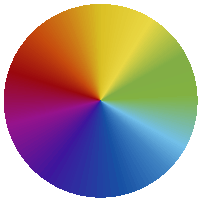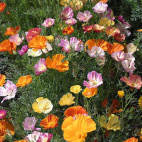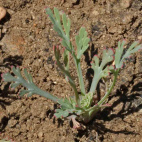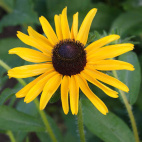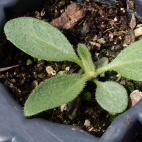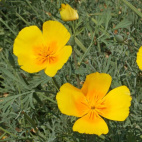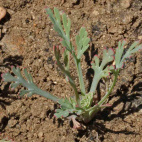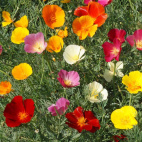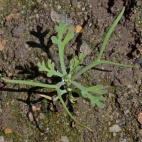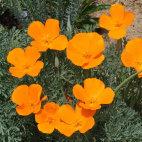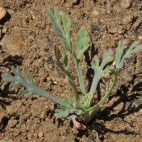Color
Availability
USDA Zone
Region
Type
Duration
Season
Germination
Soil
Sunlight
Height
Use
Narrow Your Search
Color
Availability
USDA Zone
Region
Type
Duration
Season
Germination
Soil
Sunlight
Height
Use
Wildflower Seeds - Northern Region
The Northern region is home to our Canadian friends in the eastern provinces, as well as the northern-most part of the Eastern US. This area is characterized by a long, cold winter with lots of snow, and a short humid summer that only lasts about 3 or 4 months. Most of the area is classified as a UDSA Growing Zone 4 or less, and the species that grow here have interesting ways to perpetuate themselves in spite of the short growing season. There are a lot of forests and wetlands in this region, so adequate moisture is hardly ever a problem. Look up your growing zone to make sure that the Northern wildflower seeds that you want to grow are winter hardy. Alternatively, just order annual flower seeds online so that the plant does not need to make it through the winter, but can reseed itself and come back from seed the next year.
-
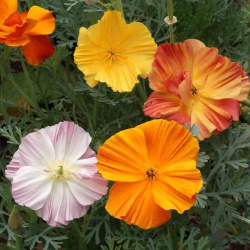 On Sale!
Ballerina California Poppy Seed Mix
Eschscholzia californica
Beautiful shades of red, pink, and gold will dazzle the eye with this popular California Poppy mix. The silky, cup-shaped flowers form on slender stems just like the common Orange California Poppy, but this shows off with many more colors.Quick Viewx
On Sale!
Ballerina California Poppy Seed Mix
Eschscholzia californica
Beautiful shades of red, pink, and gold will dazzle the eye with this popular California Poppy mix. The silky, cup-shaped flowers form on slender stems just like the common Orange California Poppy, but this shows off with many more colors.Quick ViewxBallerina California Poppy Seed Mix
Eschscholzia californica
Beautiful shades of red, pink, and gold will dazzle the eye with this popular California Poppy mix. The silky, cup-shaped flowers form on slender stems just like the common Orange California Poppy, but this shows off with many more colors.
$3.48 Pkt - $13.00 / Oz -
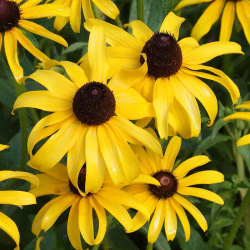 Black Eyed Susan Seeds
Rudbeckia hirta
Black-eyed Susan is probably the most popular wildflower for summer gardens. This biennial is so easy to grow, and produces a lot of showy yellow blooms that are liked by butterflies - so why not have it in the garden?Quick View$2.98 Pkt - $7.09 / Oz
Black Eyed Susan Seeds
Rudbeckia hirta
Black-eyed Susan is probably the most popular wildflower for summer gardens. This biennial is so easy to grow, and produces a lot of showy yellow blooms that are liked by butterflies - so why not have it in the garden?Quick View$2.98 Pkt - $7.09 / Oz -
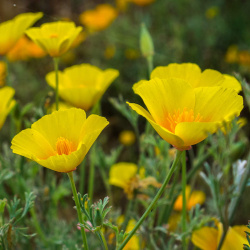 Golden West California Poppy Seeds
Eschscholzia californica
Search no further with these golden treasures. This variety is the golden yellow version of the immensely popular Orange California Poppy. Very easy to grow, so recommended for those that are just starting out in their gardening journey.Quick View$2.98 Pkt - $10.04 / Oz
Golden West California Poppy Seeds
Eschscholzia californica
Search no further with these golden treasures. This variety is the golden yellow version of the immensely popular Orange California Poppy. Very easy to grow, so recommended for those that are just starting out in their gardening journey.Quick View$2.98 Pkt - $10.04 / Oz -
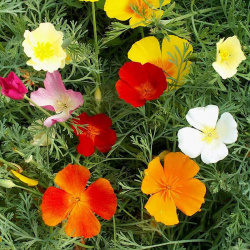 California Poppy Seed Mix
Eschscholzia californica
Can't decide which color of California Poppy seeds to buy? Experience a dazzling array of different colors with a carpet of this California Poppy mix. This mix is very easy to grow and is great for beginning gardeners.Quick View$2.98 Pkt - $8.46 / Oz
California Poppy Seed Mix
Eschscholzia californica
Can't decide which color of California Poppy seeds to buy? Experience a dazzling array of different colors with a carpet of this California Poppy mix. This mix is very easy to grow and is great for beginning gardeners.Quick View$2.98 Pkt - $8.46 / Oz -
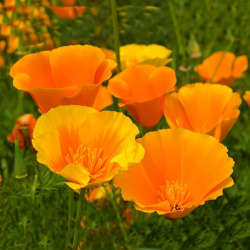 On Sale!
Orange California Poppy Seeds
Eschscholzia californica
This Orange California Poppy is the stuff that makes awesome wildflower calendar photos. Lighting up vast expanses of the springtime California mountains, they are probably the all-time favorite wildflower of the West. They can also be successfully grown as an annual in the Eastern US.Quick Viewx
On Sale!
Orange California Poppy Seeds
Eschscholzia californica
This Orange California Poppy is the stuff that makes awesome wildflower calendar photos. Lighting up vast expanses of the springtime California mountains, they are probably the all-time favorite wildflower of the West. They can also be successfully grown as an annual in the Eastern US.Quick ViewxOrange California Poppy Seeds
Eschscholzia californica
This Orange California Poppy is the stuff that makes awesome wildflower calendar photos. Lighting up vast expanses of the springtime California mountains, they are probably the all-time favorite wildflower of the West. They can also be successfully grown as an annual in the Eastern US.
$2.98 Pkt - $7.65 / Oz
The Northern region is home to our Canadian friends in the eastern provinces, as well as the northern-most part of the Eastern US. This area is characterized by a long, cold winter with lots of snow, and a short humid summer that only lasts about 3 or 4 months. Most of the area is classified as a UDSA Growing Zone 4 or less, and the species that grow here have interesting ways to perpetuate themselves in spite of the short growing season. There are a lot of forests and wetlands in this region, so adequate moisture is hardly ever a problem. Look up your growing zone to make sure that the Northern wildflower seeds that you want to grow are winter hardy. Alternatively, just order annual flower seeds online so that the plant does not need to make it through the winter, but can reseed itself and come back from seed the next year.

